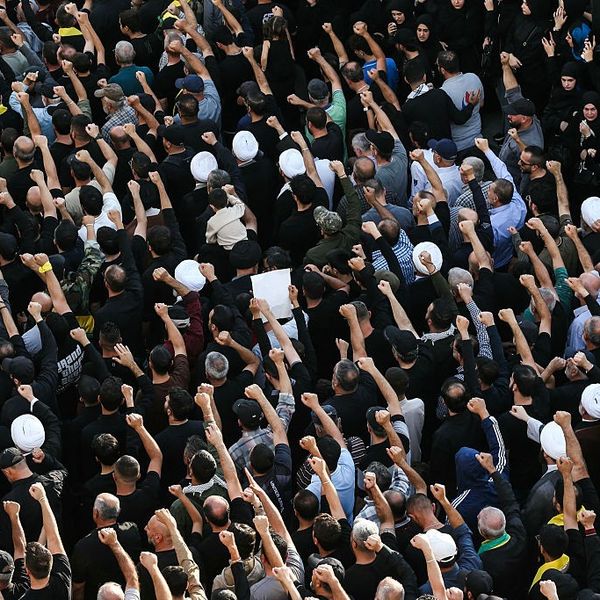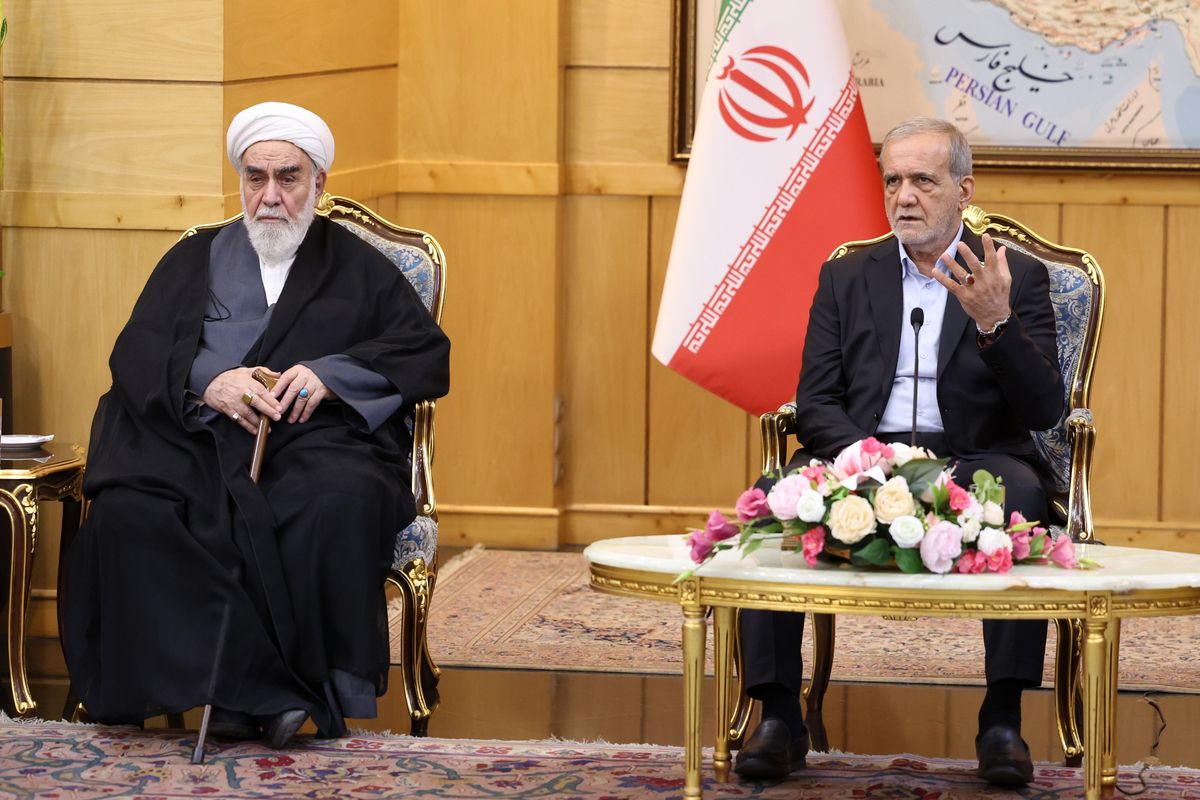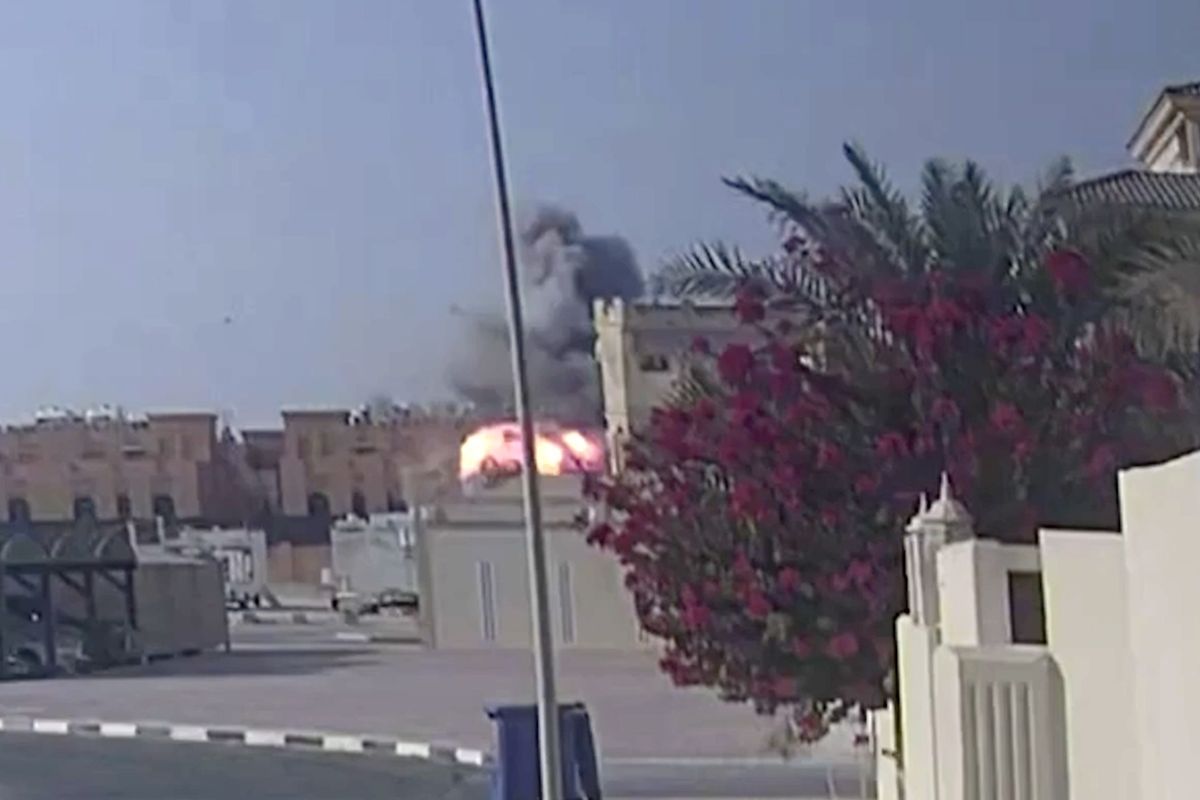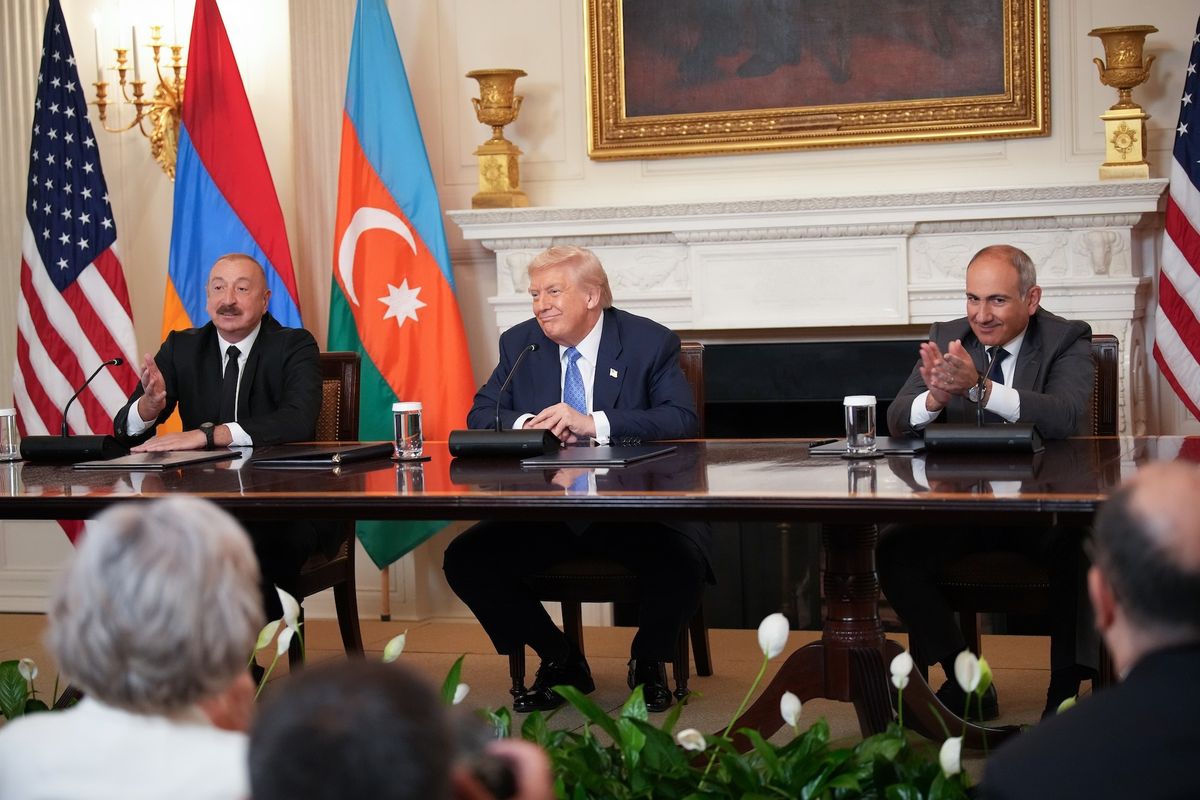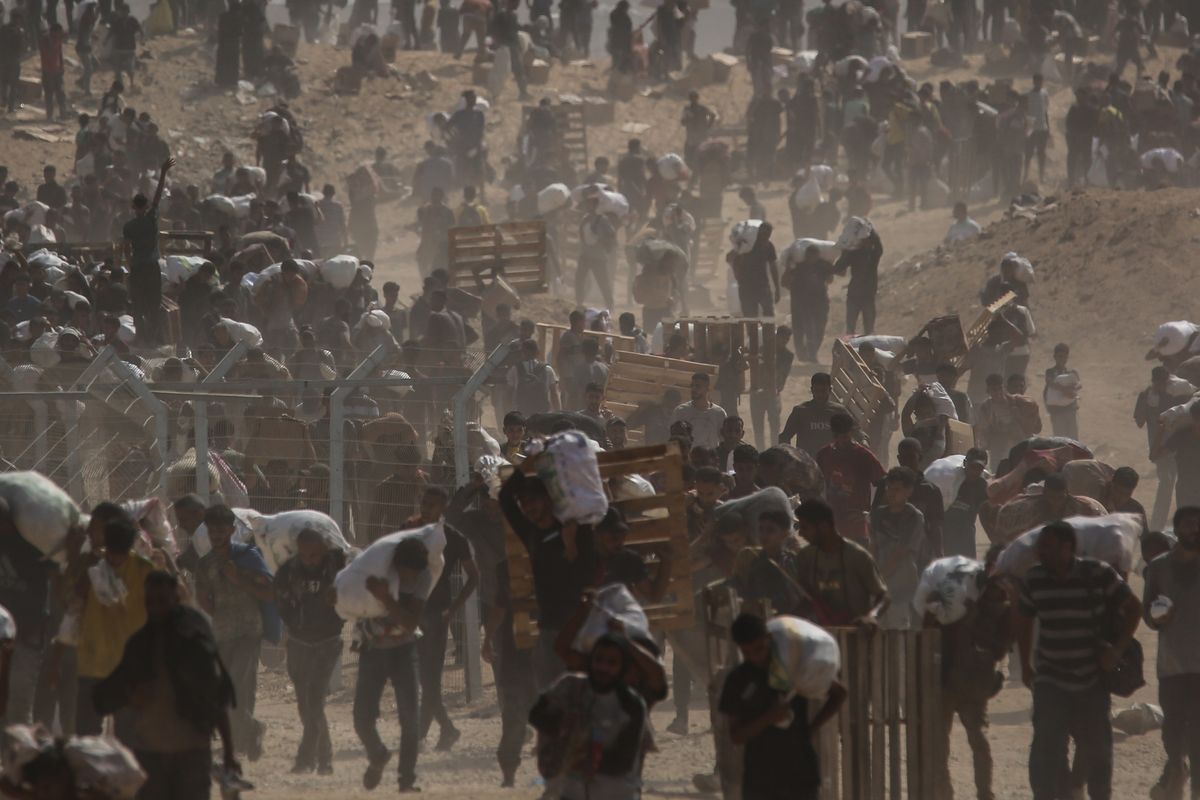OPINION — On October 7th, the day after the 50th anniversary of the Yom Kippur War, Hamas launched its deadliest terrorist, military, and hostage-taking attack ever on Israel.
The attack comprised complex, multi-dimensional terrorism and other assaults using intelligence, ground, air, sea, rocket-missile, cyber, and propaganda capabilities. The attacks against civilians included wanton killing sprees of thousands and massive kidnapping, while illustrating deep knowledge of Israel’s infrastructure and vulnerable military tactics.
The entirety of October 7th reflects years of planning, training, and compartmented rehearsing on the part of Hamas’s Izz ad-Din al-Qassam brigades and relied on foreign assistance of diverse types over years from Iran, probably Iran’s proxies, such as Hezbollah, and others, and involved the secreting of resources and materiel, underground manufacturing, an amalgamation of new and hodgepodges of weapons, and much more.
All of this was lasered into a supreme concentration of conceiving, architecting, and executing a terrorist attack designed to conduct mass murder, maiming, hostage-taking, destruction, humiliation, sheer terror, and more, presumably for political ends.
As a result of the Hamas attack, we are seeing the inevitable Israeli military response. This includes the complete siege of Gaza and targeting of anything associated with Hamas, leading to the “collateral” killing of countless civilians. Hamas has also reportedly hampered some Palestinian civilians from moving, as it wants the civilians and the hostages abducted from Israel to be human shields. These attacks are broadcast nearly instantly on social media platforms to galvanize the Arab world around Hamas’s cause.
Further, Hamas has built and developed their locations below and around schools, hospitals, mosques, and other sensitive civilian sites with the hope that the Israel Defense Forces will not strike or, if they will, will cause civilian death and casualties that will make Israel and the IDF the evil, abhorrent ones in this Machiavellian, brutal storyline and landscape.
This was more recently illustrated by Hamas blaming Israel for negligent mistakes, such as what the United States and Israel are saying is the misfire of rockets by Islamic Jihad that killed hundreds of individuals at the Al-Ahli hospital in Gaza City on October 18.
The result sparked massive protests and violence across the Arab world aimed not just at Israel but also at the US, and it is especially noteworthy that Iran has been flaming the situation and that Hamas immediately called for a “Day of Rage,” capitalizing upon what appears to be Islamic Jihad’s own fatal error.
But a major question we have to ask ourselves is, why did Hamas carry out this type of enormously and bloodthirsty unprecedented terrorist attack – and why now?
It's not just for the President anymore. Are you getting your daily national security briefing? Subscriber+Members have exclusive access to the Open Source Collection Daily Brief, keeping you up to date on global events impacting national security. It pays to be a Subscriber+Member.
Hamas itself has said it did so for a variety of reasons, including as a response to Israeli settlers entering the al-Aqsa Mosque in Jerusalem, which Hamas called a “desecration.” In addition, Hamas has cited worsening treatment more broadly of Palestinians in the West Bank and East Jerusalem and claiming abuse by Israeli security forces through aggressive raids in major West Bank cities and by what they described as the violent and destructive actions of Israeli settlers, often with the complicity of soldiers.
Some believe that a major part of Hamas’s attack objective was to take hostages not only to complicate Israel’s inevitable retaliatory operations, but also to provide Hamas with a strong negotiating position to try to free Palestinian prisoners from Israeli jails.
Many commentators have pointed to the Gilad Shalit prisoner exchange in 2011, when the IDF army soldier was released in exchange for 1,027 mostly Palestinian prisoners and have said that Hamas learned from that exchange and wants to conclude another.
This time, however, Hamas may have much more leverage given that the hostages include about 200 people, and they comprise civilians, children, a special needs child, elderly persons (including a Holocaust survivor), members of the same families, dual citizens from other countries (including U.S. Citizens), and active-duty soldiers. In short, these characteristics, reprehensibly, make these individuals even more valuable “bargaining chips.”
While Mohammad Deif, the leader of the military wing of Hamas, said in a recorded message immediately after the attack that the terrorist group had launched the operation so that “the enemy will understand that the time of their rampaging without accountability has ended,” Ali Barakeh, based in Lebanon and a senior Hamas member of the organization’s political apparatus, stated that the attacks were a response to “Israeli crimes against the Palestinian people in Jerusalem and the West Bank” and to “break the blockage on the Gaza Strip” (most Gazans live in poverty, are dependent on international aid, and over 50% of Gaza’s 2.3 million people are 18 or under).
Some analysts have additionally pointed to something else behind Hamas’s terrorist attack. Like most politics, there is a local dimension. As a Vox article excellently summed it up on October 14th, “Palestinian politics is defined, in large part, by how its leadership responds to Israel’s continuing occupation – both its physical presence in the West Bank and its economically devastating blockade of the Gaza Strip. Hamas’s strategy to outcompete its rivals, including the Fatah faction currently in charge of the West Bank, is to channel Palestinian rage at their suffering: to be the authentic voice of resistance to Israel and the occupation.”
Other regional experts assess Hamas wanted, as one of its objectives, to intentionally draw Israel into not just the pulverizing destruction the IDF is exacting on Gaza through its air and artillery strikes, but also to draw Israel into a ground assault and a long, deep quagmire. What Hamas knows will be the disproportionate and gruesome outcome of these Israeli attacks will spawn sympathy for the Palestinians and even Hamas, as the symbol of resistance to Israel, while leading many internationally to feel that Israel is the responsible, merciless party and bears responsibility for the situation.
Looking for a way to get ahead of the week in cyber and tech? Sign up for the Cyber Initiatives Group Sunday newsletter to quickly get up to speed on the biggest cyber and tech headlines and be ready for the week ahead. Sign up today.
As a result of overpressures on Israeli politics and society due to political turmoil, and Israel’s focus and concentration on the West Bank given the increased number of Israeli-Palestinian security issues and fatalities there over the past many months, some adversaries are likely to have perceived Israel as weak and divided prior to October 7th.
For some, probably including Hamas, the sum total suggested Israel was more susceptible and vulnerable than at any time in recent history. And that, married with the other factors noted above and below, and especially the progress that the Saudi Arabia-Israel peace process negotiations were making, led Hamas and its supporters to feel that now was actually the perfect time to carry out an unprecedented terrorist attack even if the preparations had been long in the making and potentially aimed toward a different date at some point.
The terrorist attack has, however, had the upshot of rallying Israel, and even in the face of Prime Minister Benjamin Netanyahu’s pre-October 7th cabinet (now, there’s a unity government, which includes members of the opposition, in charge), most experienced analysts believe the attack was such a watershed event that is has changed the nation forever, including forging consensus that was previously missing.
While all these objectives played into Hamas’s terrorist leadership’s calculations in deciding to launch its attack and to do so when it did, there are two other absolutely critical factors at play, in our view:
First, Hamas has, in all likelihood and with Iran’s strong backing, just derailed the US-backed peace negotiations to normalize Israel-Saudi Arabia relations. These negotiations were making progress albeit without agreement yet on key Palestinian and other issues. Therefore, the imperative for trying to wreck the peace process now was more severe than ever for Hamas and Iran and its other proxies. Many believe that if the Saudis were to reach a deal with Israel, and particularly beyond those that have already signed peace agreements with Israel (i.e., Egypt and Jordan dating back decades and then Bahrain, Morocco, Sudan, and the UAE as part of the Abraham Accords signed in 2020), others would follow suit quickly. That, in turn, could mean game over for Hamas and a substantial dent to Iran’s power and influence throughout the Middle East and beyond.
In addition, Iran and Israel have been continuing their “shadow” fighting with purported Israeli attacks on Iranian soil earlier this year, a senior Iranian delegation in Syria recently, continuing shipments by Iran of arms and kit to Hezbollah to make its missiles and rockets even more deadly, and so on.
As Iranian President Ebrahim Raisi recently said, “We believe that the Zionist regime is intending to normalize bilateral relations with the regional countries to create security for itself in the region,” and “we are against any bilateral relations between our regional countries and the Zionist regime.”
Second, we assess that, as a Hamas spokesperson claimed, the attack was additionally a “message” to Arab countries, calling on them to cut ties with Israel. It was, in other words, Hamas’s gambit to completely overturn the status quo.
Likening it in an extremely limited way to how Osama bin Laden created al-Qaida (“the base”) and sought to rally Muslims throughout the world, Hamas is trying to slow, stop, and reverse the decades-long movement allowing Israel to be a legitimate part of the region, especially while the formal creation of an unoccupied, independent Palestinian country remains elusive and incomplete. The problem, however, is that Hamas wants that nation of Palestine to be, at least in part, where Israel is now. “From the [Jordan] river to the [Mediterranean] Sea” – a common refrain by Hamas and many other Palestinians – is code for there can and should be no Israel. Israel would not exist at all, and certainly not in its current configuration if Hamas could have its way.
Rallying a “base” around this ideological tenet of stopping the peace process, movement toward accepting Israel, and reversing the tide is the most vital part of Hamas’s raison d’etre.
Hamas is an Islamist organization that came into its own in 1987 and was an offshoot of the Muslim Brotherhood, a Sunni Islamist group. Hamas is an acronym in Arabic for “Islamic Resistance Movement.” Like Palestinians (and some others) near and far, Hamas considers Israel as an occupying power and seeks to “liberate” Palestine and certainly the Palestinian territories from Israel occupation. It wants to put an end to Israel’s complete control or significant power and influence in the Gaza Strip and the West Bank – plus Jerusalem — related to everything from governance to taxes, travel, use of seaports, airspace control, imports and exports, military power, and much more.
A significant difference, though, from some other Palestinian parties and factions, such as the Palestinian Authority and Fatah, is that Hamas continues to consider Israel an illegitimate nation, refuses to recognize or engage with Israel, and presents itself as the alternative and antithesis to the PA and Fatah.
This attack also illustrates a further radicalization of Hamas with ISIS style mass murder, torture, and kidnapping on an unprecedented scale. It should be noted that ISIS flags and other associations were found on the bodies of Hamas terrorists killed in the southern Israeli communities that Hamas had attacked.
Indeed, Hamas considers itself to be the preeminent leader of the Palestinians – and probably more generally with Iran — against Israel and its right to exist. This is one of the reasons it, even as a Sunni fundamentalist organization, is so close to and a proxy of Shia Iran, why Hamas receives backing and financial support not only from Iran, but from Arab countries, NGOs and other organizations in the region and across the world, and from individual donors – all despite being formally considered a terrorist organization by the US and EU (and, of course, Israel).
In other words, Hamas was sending a very purposeful message of intent and capability on October 7th. It was also on full display for the millions of Palestinians living in Gaza, the West Bank, and East Jerusalem, the Palestinian diaspora, and for other Muslims across the globe to rally around.
So where does all of this leave us? Hamas’s military wing’s leadership – potentially with the connivance of others – has made a deadly gambit. It has done so before, but this time is different for many reasons. Mohammad Deif (and possibly Iran) did not just go to the precipice; he went over the cliff, unleashing unprecedented violence that, in turn, has triggered the inevitable Israeli response, unbridling the IDF’s own force, destruction, and killing.
Hamas’s ruthless attack and the predetermined aftermath have also set the stage for a broader war that draws in and engulfs still more parties, particularly as there have already been skirmishes on Israel’s northern border with Hezbollah and others in southern Lebanon and southwest Syria, in addition to unrest and agitation “on the streets” and even terrorist attacks and hate crimes in other nations, including in America.
Iran’s foreign minister, furthermore, has weighed in during a recent tour of the region, stating that Iran and its proxies in the region “will not allow the Zionist regime to do whatever it wants in Gaza...therefore any preemptive action is possible in the coming hours.”
As one analyst aptly — even if tragically and fatalistically — put it recently, “it’s likely to get worse before it gets worse.”
The Cipher Brief is committed to publishing a range of perspectives on national security issues submitted by deeply experienced national security professionals.
Opinions expressed are those of the author and do not represent the views or opinions of The Cipher Brief.
Have a perspective to share based on your experience in the national security field? Send it to Editor@thecipherbrief.com for publication consideration.
Read more expert-driven national security insights, perspective and analysis in The Cipher Brief





